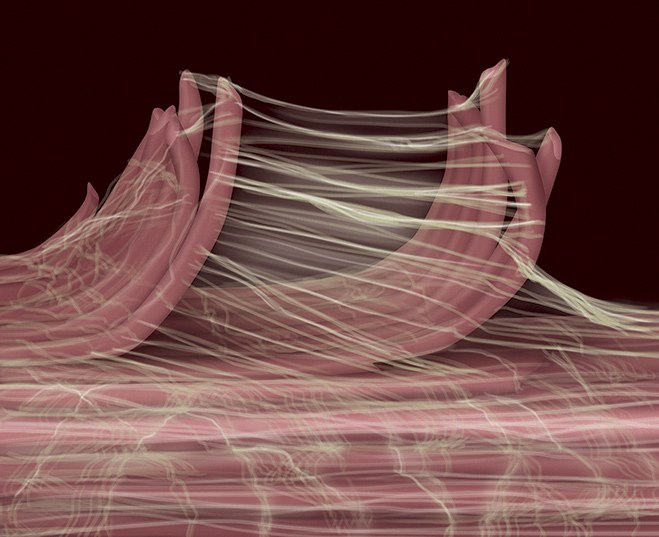Post-Operative Adhesion Formation

Marjorie Brook
Adhesion formation is a common complication following a major surgery. One of the most important things you can do to prepare for surgery would be to boost and clear out your immune system by receiving Manual Lymphatic Drainage massage (MLD). MLD aids in cleansing the blood which allows greater circulation of oxygen and nutrients throughout your body. This will greatly aid in the process of recovery after surgery. Ideally you should try and have at least one session weekly for 4 weeks prior to your surgery. Healthy immune systems also protect you from infection.
Nutrition
Proper nutrition and supplementation are also essential to the healing process to prevent adhesion formation. In addition, herbs and supplements are well known for assisting the body to heal following surgery or trauma.
- When taken prior to surgery, zinc reduces wound healing time, rapidly reduces wound size, and bolsters immune function to help ward off infection.
- Vitamin C is an important component for full post-operative recovery. According to the Australasian College of Nutritional and Environmental Medicine, Vitamin C levels actually decrease in burn victims, post-op patients, and other victims of physical trauma. This vitamin is essential for the growth and mending of tissue throughout your body. It’s required to manufacture collagen, repair wounds and make scar tissue.
- Vitamin A stimulates collagen synthesis and increases the strength of scar tissue so that it doesn’t tear.
- A deficiency in the B-complex vitamins can hinder your ability to heal from injury or surgery because these nutrients link collagen and deliver oxygen and nutrients to the site of injury. The University Of Maryland Medical Center specifically indicates that thiamine and pantothenic acid, or vitamins B-1 and B-5, can heal wounds and promote skin health.
Always ask your naturopath or physician about which herbs or supplements may work best with your particular health circumstances.
Increasing the intake of anti-inflammatory foods, spices, and alkaline water may help immensely. Foods such as dark green vegetables, garlic, onions, mushrooms, peppers, berries, seeds, nuts, metal free fish, grass feed beef, organic eggs and chicken. Like vegetables, herbs and spices have anti-oxidant and ant-inflammatory abilities. Cinnamon, curcumin, turmeric, oregano, rosemary, olive, ginger, and green tea also help to reduce inflammation.
Manual Lymphatic Drainage
Immediately after surgery the standard protocol is basically bed rest and nothing else. However, this is exactly when light massage therapy techniques such as MLD, myofascial release and visceral manipulation should be administered (never apply deep pressure techniques directly after surgery) to increase the efficacy of the healing process and prevent adhesion formation.
Compression bindings can aid in holding the collagen fibers together at the incision. It can reduce swelling and prevent the incision from tearing.
Avoid excessive but not all movement. Gentle appropriate movement helps to prevent excessive scar tissue and keep scar tissue from limiting future movement. You need to introduce simple tissue oriented range of motion while avoiding severe pulls or stretching of the wound as it heals. Tension (actions that separate or pull the area apart) on the wound while it is healing can imped the healing process can cause excessive scar growth.

Fascial collagen fibers of the perimysium and endomysium of muscle fibers. Permission: Joseph E. Muscolino. Kinesiology – The Skeletal System and Muscle Function, 3rd ed. (Elsevier, 2017). Modeled from a photo by Ronald Thompson.
STRAIT Method
It can take up to 18 months for wounds to completely heal. Once out of the initial healing phase (first 3 months) a slightly more “aggressive” approach can be applied to help release and excessive scar tissue/adhesion build up. Scar Tissue Release therapies such as The STRAIT Method. The Scar Tissue Release and Integrated Therapies Method is a progressive therapeutic approach to healing which recognizes the complexity of each individual. Utilizing a whole person perspective, The S.T.R.A.I.T Method is a multi-disciplinary approach combining the therapeutic and rehabilitative modalities of fascial scar work, mind-body Interactions, body mechanics, therapeutic stretching/strengthening and proprioceptive support to create a balanced treatment session designed to meet each clients’ goals and needs. Every person is different and therefore there cannot be a one-modality -fits -all mentality.
Utilization of therapeutic stretching/strengthening can prevent fibrosis by stretching and loosening the injured areas, once any abrasions have healed. It helps to keep the tissue loose and prevents scar tissue from forming.
It is always important after there has been a restriction in activity to correct any and compensations that may have formed. Body mechanics retraining from simply how to get out of bed to standing up from a sitting position is crucial to avoid any future adhesion formation through the entire body.
This blog post article was created in collaboration with www.terrarosa.com.au

